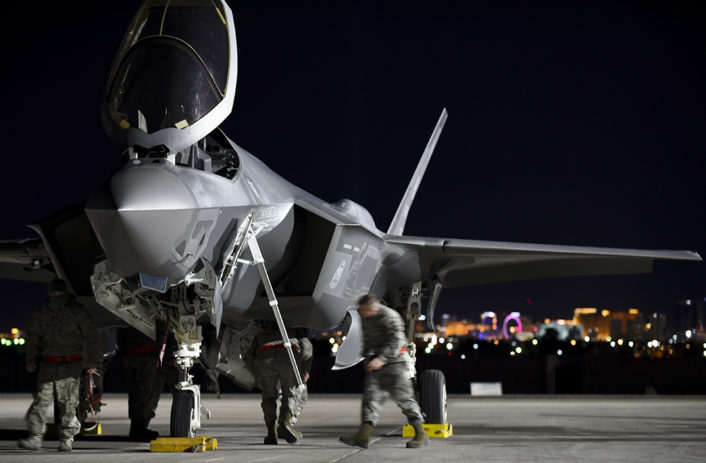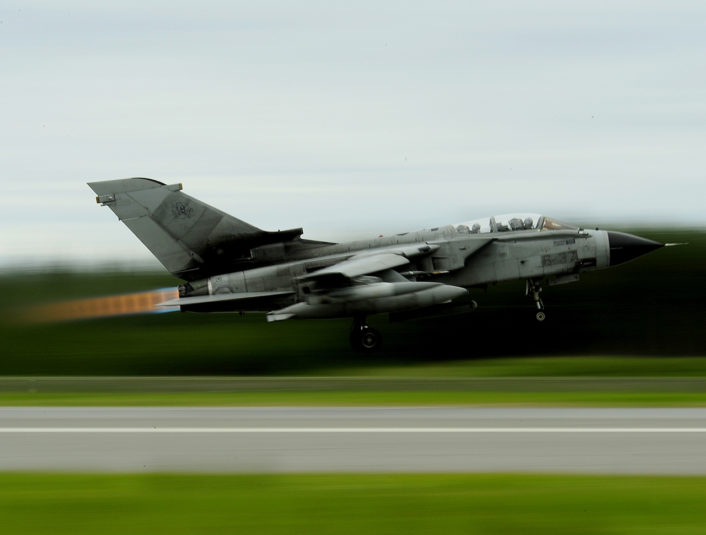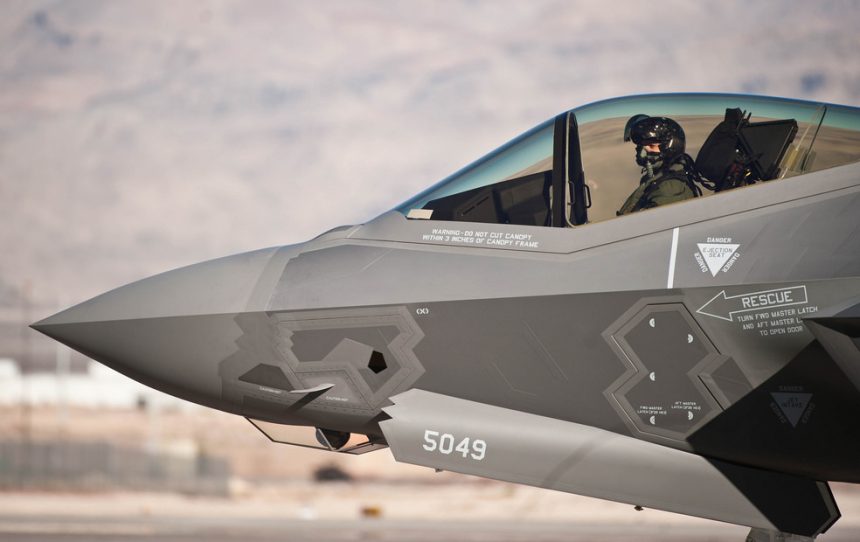Red Flag is not a “joke” as some critics have said. It’s an exercise that continues to evolve to replicate the most modern scenarios, where 5th Gen. aircraft are pivotal to the final success.
Red Flag is one of the biggest high-intensity exercises in world. It is designed to simulate the first 10 days of a conflict with hundreds of assets involved. A friendly force (Blue Air) against an enemy force (Red Air) in a scenario designed to provide pilots with real combat experiences so that they can improve their skill set before heading into actual combat. Something evident in the Red Flag motto as well: “Train as you fight, fight as you train”.
I took part in RF twice during my career: in 2002, I was at Nellis Air Force Base, Nevada, for a “standard” RF, whereas in 2010 I deployed to Alaska for the so-called Red Flag-Alaska (read here about the epic transatlantic flight we undertook to take six Tornado bombers back to Italy after RF-A..).
RF has the ability to bring the pilot into a unique realistic scenario, and is also a place where new tactics are born, developed or put to test.
I remember more than 70 aircraft scheduled to depart from Nellis AFB one morning; one big COMAO per day with a scenario featuring different type of threats (Surface-to-Air and Air-to-Air), targets and ROE (Rules of engagement).
Believe me, RF is much more than a normal large-scale exercise!
Ever-changing scenarios
After attending two RFs I can assert I’ve seen scenarios changing a lot throughout the time.
In 2002 we had a well-defined set up, we knew where the enemy was, how it would react to our presence, where the threats were located etc.; in 2010, we faced a “border line” scenario with enemy elements embedded in friendly forces or civilian population, where CDE (Collateral Damage Estimation) was extremely important, where target VID (Visual IDentification) or EOID (Electro Optical IDentification) were the main success factors in the simulated air campaign. In other words, 8 years apart, the RF scenario had evolved to adapt to the ever-changing “combat environment.”
The most recent RFs prove that the exercise continues to change.
For instance, while maintaining the standard coalitions scheme (Blue and Red forces), RF 17-1 had the two teams involved in a “crisis” instead of a war situation. On top of that, not only does the scenario has introduced the latest and most sophisticated and capable threats that require a change in tactics, but it has also moved on a higher level, focusing on the importance of “battlefield information management,” a kind of task the much debated F-35 is going to master.
Today, taking part in a RF means joining pilots, ground forces, intelligence analysts, cyber and space operators, for testing and training operations at Nellis as well as the Nevada Test and Training Range north of Las Vegas.
All the participants have only one goal in mind: working together to FITS “Find, Identify, Track and Strike” the adversary, to attack forces in a multi-domain battlefield which is based on what we have encountered so far in theater and what we may expect to find in the future wars. This is the real core business and the big change of the most recent RFs.
A RF mission is usually made of 20-25 adversaries: not only aircraft, but also ground-to-air threats, moving and unknown threats etc. In other words, the old fixed scenario has become much more “dynamic” requiring a real-time “combat battlefield” coordinator.
Therefore, the most recent RF scenarios aim to develop the ability to fuse all the combat capabilities. In this context, the F-35 brings to the package the ability to penetrate deep into the most complex and “unknown” environments providing the “overall control” of the battlefield. The F-35, as well as any other modern aircraft with similar sensor fusing ability, can also work in a complementary fashion with the 4th generation fighters, sharing the information with all the other “players” while providing its own amount of fire power to the team.
Stealth technology (capability to survive and operate effectively where others cannot) combined with 5th generation features (i.e. superior information management), were pivotal to achieve the overall RF’s mini-campaign results.

Although the reliance on a single capability or asset will not be enough to succeed in the future scenarios, the F-35, as a “combat battlefield” coordinator, is a “game changer”: it brings new flexibility, new capabilities and, above all, helps enhancing the “survivability” of the coalition packages.
In a “crisis” situation, the coalition needs to timely react to a fast evolving scenario. With the ability to collect, manage and distribute intelligence data, during RF 17-1 the F-35s were able to geo-locate the threats and target them with the required (simulated) weaponry. Even when the F-35s had expended all their ordnance they were requested to stay in the fight and assist the rest of the package by collecting live battlefield data and passing it to older 4th generation fighters via Link-16.
This is the value-add of 5th generation fighters: their ability to suppress enemy targets while contributing to dominate the air and battlespace supporting “legacy” aircraft.
Believe me, it’s not easy to be fighter, striker and tactical battlefield coordinator at same time! So whatever the ROE (Rules Of Engagement) or the role of the F-22 that teamed with the F-35 were, the 20:1 kill ratio against the aggressors is a pretty impressive achievement.
Analysing the RF 17-1, it is quite impressive (at least from an old-school fighter pilot’s standpoint) to hear that the F-35 flew right on top of the threat, did its job performing successful strikes and providing command and control tasks to other COMAO assets, before returning home unscathed.
The Red Flags I attended in the past did only feature “conventional” fight with no 5th generation asset involved. My job as wingman was to keep visual contact with my leader, follow him while he managed the air-to-air picture and, if everything went well, reach the TGT (target) area, using terrain masking, without being targeted by the red air or ground-to-air systems . Less than a decade ago, the friendly forces did not have the capability to target advanced surface-to-air missile threats with an aircraft like the F-35A and exercise planners were obliged to simulate the engagement of the most heavily defended targets with long-range “standoff” weapons – like Tomahawk cruise missiles – a kind of air strike that would require an outstanding intelligence coordination and would not fit too well in case of moving targets.

That changed significantly with the advent of new generation aircraft. The wingmen flying 5th gen. aircraft today, act as air battle managers who are able to “see” the battlefield in a way an F-15 or an F-16 pilot will never see, whereas their leaders can drop PGMs (Precision Guided Munitions) on ground targets or engage enemy fighters.
In 2002, everybody came in into fight, moving from BVR (Beyond Visual Range) and eventually to WVR (Within Visual Range) for a big merge; today, the adversaries roughly know where the stealth fighter *could* be, but they don’t know exactly where they are, how they will approach the target or maneuver to engage the enemy.
Summing up, the real added value of 5th Gen. aircraft (both during RFs and in case of real wars) is their ability to perform information distribution, real-time battlefield management, and dynamic FITS (Find, Identified, Track and Strike) reducing the risk of attrition or collateral damage.









